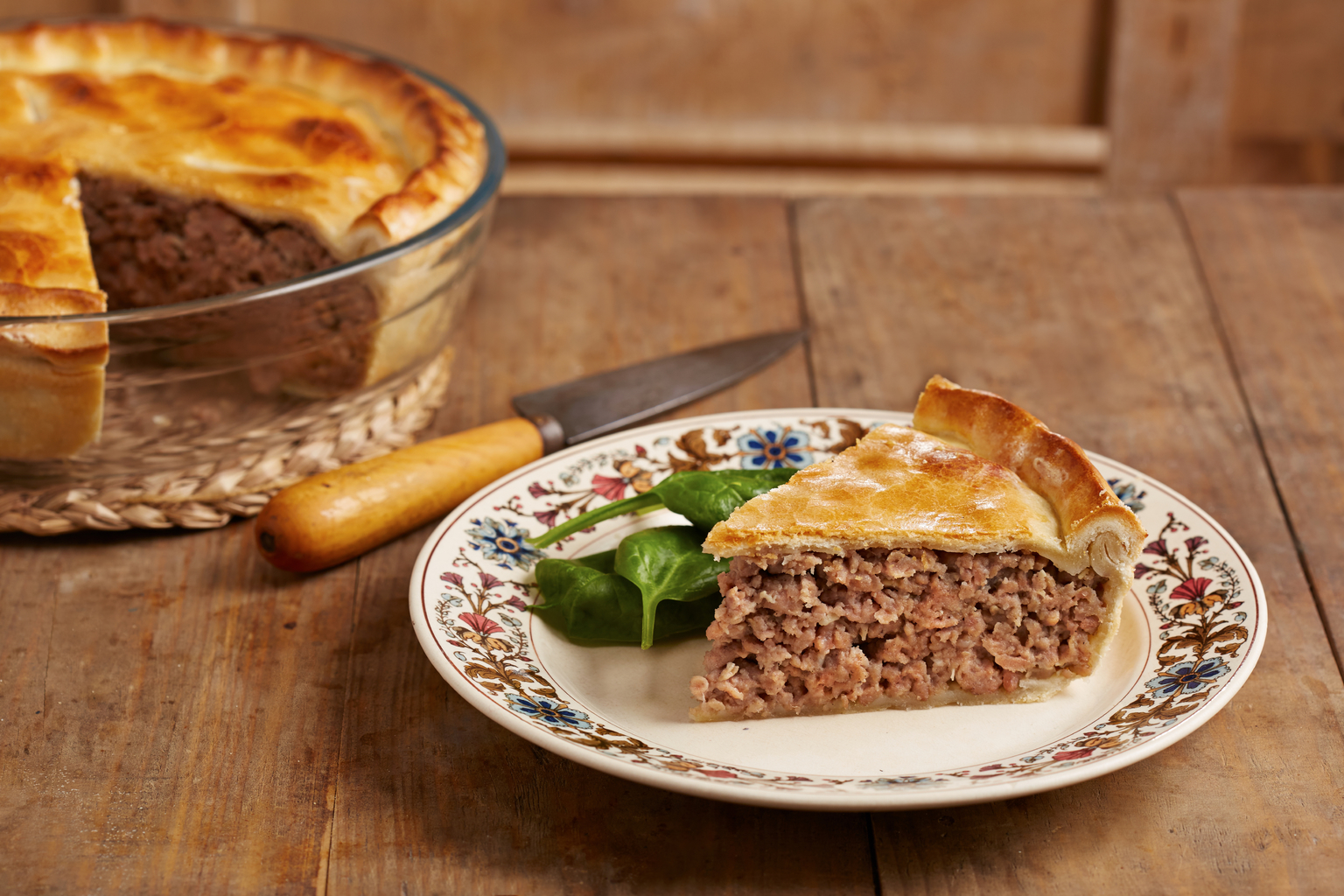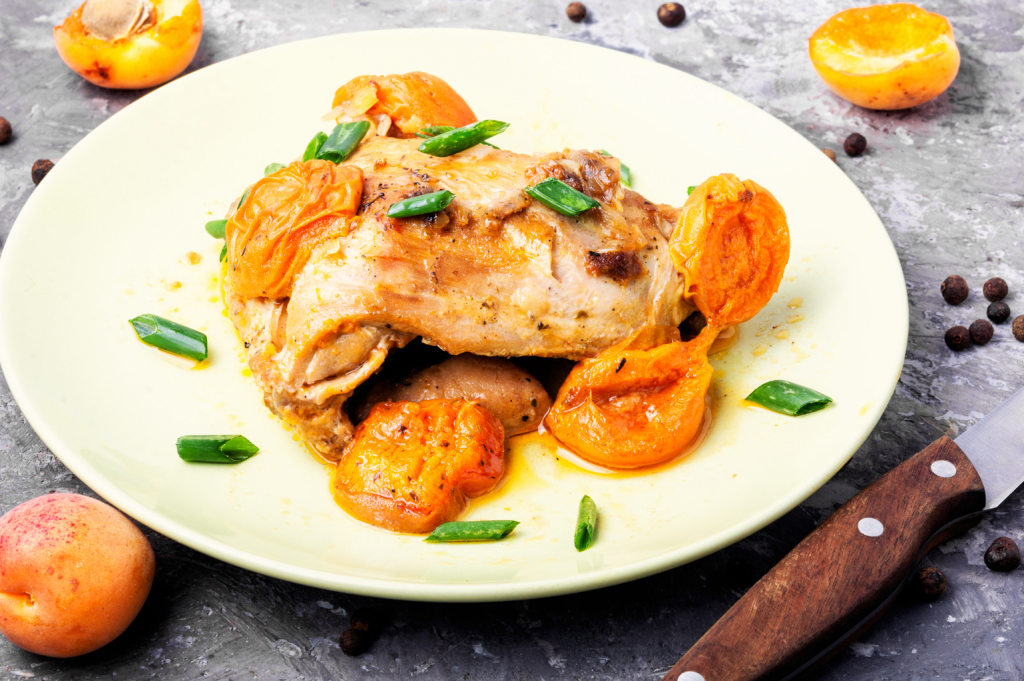Recipes that advise opening a packet of this, and adding a can of that, usually do not hold too much attraction. Quite often the results are disappointing. However there are always exceptions, and shortcuts here and there, if the end result is good, are great timesavers in the busy life we all seem to lead here in Tokyo.
Last summer we lunched with relatives on the balcony of their attractive apartment overlooking Sydney Harbor. It was a fine, warm, sunny Sunday and the yachts were out and in full sail on the blue water. Jean, always the calm one, was never the one for fussing over food, but always managed to produce an interesting meal with seemingless effort. A large glass bowl full of fresh ripe peaches and nectarines glistening and chilled from the refrigerator, a tossed green salad, a selection of interesting cheeses, a crisp white wine, and a dish—”Oh, that’s my easy apricot chicken casserole,” she replied, to my query. I use this recipe often nowadays, as it is so simple to prepare, using just a few ingredients found in most kitchen cupboards.
- 1 chicken, or equivalent number of pieces. Chicken on the bone seems less dry and sweeter, but select pieces not too fatty or remove any fatty skin.
- 1 pkt French onion soup
- 1 bottle Thousand Island dressing
- 250 grams apricot jam
- 2 cloves garlic, crushed
- 2 teaspoons mustard (optional)
Place the chicken, cut into serving pieces, into an ovenproof casserole, combine rest of ingredients and pour over chicken. Bake in a moderate oven for one hour, basting occasionally.

Quebec Specialties: Tourtiere
Many countries have a variation of the meat pie or pastie that they call their very own. A mixture of any kind of meat and/or vegetables encased in pastry shapes — large or small— and then baked or deep fried. Australians abroad look rather wistful at the mention of an Australian meat pie—the best kind being made of a flaky puff pastry, chock full of chunks of beef in a rich brown gravy. Delicately seasoned, they are eaten anytime and anywhere. About the size of a saucer, they are easily eaten in the hand, and so are very popular snacks at sporting events.
Mary Kagami hails from Quebec, where she says the farmlands are lush and fruit, eggs, meat, milk and cream are plentiful, augering well for the cuisine of the area. French Canadians do not care for heavily spiced dishes, preferring the milder onions, leeks and shallots to enhance the natural flavors rather than garlic and the heavier spices.
On Christmas Eve after midnight mass, when the family troops in from the bitter cold, a traditional pie is served called the Tourtiere, which was named after the pottery casserole it was originally baked in— the Tourte. A thousand versions exist, but Mary says this recipe is fairly typical.
Tourtiere
- 2 pounds lean ground pork
- 1 pound ground beef
- 3 large potatoes cooked and mashed
- 1 ground onion
- 1/2 tsp. salt and 1/4 tsp. pepper
- 1/2 tsp. cinnamon
- 2 cups water
- Dough for two-crust pie
Simmer the meat and water 45 minutes. Add onion and seasonings and simmer 15 minutes. Mix in the mashed potatoes and cool. Put in a double crust pie and bake at 400° F for 30 minutes. Slit crust. The only time a bottle of ketchup is “de rigueur” on the table. Serve hot or cold.
For dessert, a typical favorite is the Tarte a la Ferlouche—or Ferlouche Pie:
- 1/2 cup flour
- 1 cup molasses
- 1 cup water
Cook until creamy and then add 1/2 cup raisins. Keep cooking until transparent, then add one tablespoon butter. Pour into a baked nine-inch pie shell and let cool. Top with whipped cream, flavored with almond or brandy. Sprinkle with chopped nuts.
OR, you might like to try their “Pouding au Riz a l’Erable“:
- 2/3 cup cooked rice
- 2 beaten eggs
- 1 1/2 cup milk
- 2/3 cup maple syrup
- 1/3 cup raisins
Mix and bake in a pan set in water one hour at 350° F. Serves 6-8.
Recipe and text by Yvonne Stenlake









